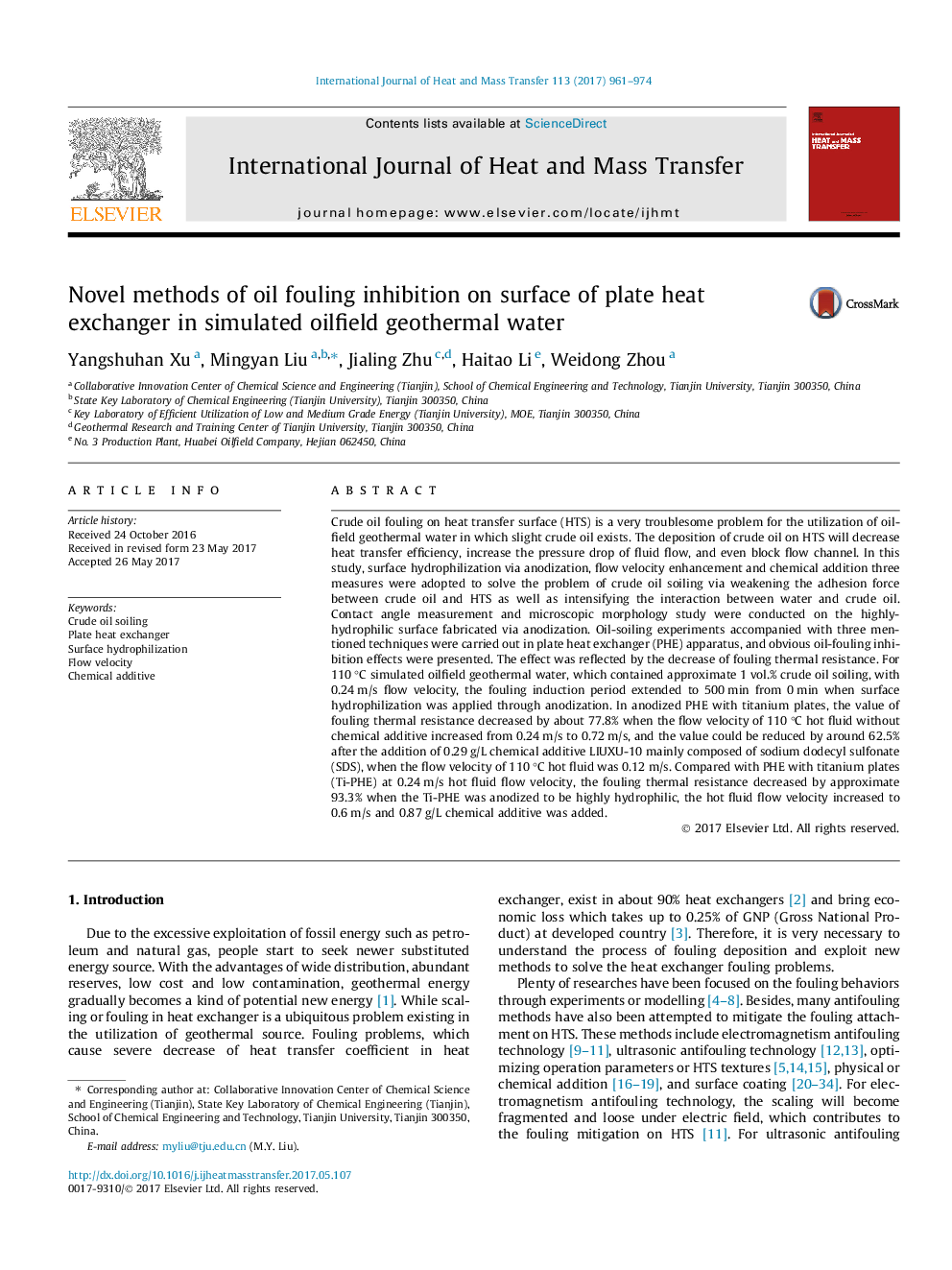| کد مقاله | کد نشریه | سال انتشار | مقاله انگلیسی | نسخه تمام متن |
|---|---|---|---|---|
| 4994226 | 1458028 | 2017 | 14 صفحه PDF | دانلود رایگان |
عنوان انگلیسی مقاله ISI
Novel methods of oil fouling inhibition on surface of plate heat exchanger in simulated oilfield geothermal water
ترجمه فارسی عنوان
روش های نوین مهار خوردگی نفت در سطح مبدل حرارتی بشقاب در آب گرم زمین گرمایی شبیه شده
دانلود مقاله + سفارش ترجمه
دانلود مقاله ISI انگلیسی
رایگان برای ایرانیان
کلمات کلیدی
نفت خام، مبدل حرارتی صفحات، هیدروفلیزر سطحی، سرعت جریان افزودنی شیمیایی،
موضوعات مرتبط
مهندسی و علوم پایه
مهندسی شیمی
جریان سیال و فرایندهای انتقال
چکیده انگلیسی
Crude oil fouling on heat transfer surface (HTS) is a very troublesome problem for the utilization of oilfield geothermal water in which slight crude oil exists. The deposition of crude oil on HTS will decrease heat transfer efficiency, increase the pressure drop of fluid flow, and even block flow channel. In this study, surface hydrophilization via anodization, flow velocity enhancement and chemical addition three measures were adopted to solve the problem of crude oil soiling via weakening the adhesion force between crude oil and HTS as well as intensifying the interaction between water and crude oil. Contact angle measurement and microscopic morphology study were conducted on the highly-hydrophilic surface fabricated via anodization. Oil-soiling experiments accompanied with three mentioned techniques were carried out in plate heat exchanger (PHE) apparatus, and obvious oil-fouling inhibition effects were presented. The effect was reflected by the decrease of fouling thermal resistance. For 110 °C simulated oilfield geothermal water, which contained approximate 1 vol.% crude oil soiling, with 0.24 m/s flow velocity, the fouling induction period extended to 500 min from 0 min when surface hydrophilization was applied through anodization. In anodized PHE with titanium plates, the value of fouling thermal resistance decreased by about 77.8% when the flow velocity of 110 °C hot fluid without chemical additive increased from 0.24 m/s to 0.72 m/s, and the value could be reduced by around 62.5% after the addition of 0.29 g/L chemical additive LIUXU-10 mainly composed of sodium dodecyl sulfonate (SDS), when the flow velocity of 110 °C hot fluid was 0.12 m/s. Compared with PHE with titanium plates (Ti-PHE) at 0.24 m/s hot fluid flow velocity, the fouling thermal resistance decreased by approximate 93.3% when the Ti-PHE was anodized to be highly hydrophilic, the hot fluid flow velocity increased to 0.6 m/s and 0.87 g/L chemical additive was added.
ناشر
Database: Elsevier - ScienceDirect (ساینس دایرکت)
Journal: International Journal of Heat and Mass Transfer - Volume 113, October 2017, Pages 961-974
Journal: International Journal of Heat and Mass Transfer - Volume 113, October 2017, Pages 961-974
نویسندگان
Yangshuhan Xu, Mingyan Liu, Jialing Zhu, Haitao Li, Weidong Zhou,
